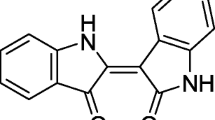Abstract
The effect of prolactin on apoptosis and the expression of bcl-2 and bax in HC11 mouse mammary epithelial cells were investigated. Flow cytometric analysis of Bcl-2 level (FITC-conjugated monoclonal anti-Bcl-2 antibody and FITC-conjugated monoclonal anti-IgG1 antibody as a negative control), number of apoptotic cells and cell cycle phases (DNA stained with DAPI) was performed. Bax transcript was measured using the RT-PCR method with GAPDH serving as a reference gene. Administration of prolactin (5lg/ml) in the presence of insulin stimulated differentiation of mammary epithelial cells, which manifested in stopping cells at G0/G1 phase, cell swelling and increase of cell number with enhanced protein content. Moreover, prolactin highly significantly reduced the extent of apoptosis of HC11 cells during 48 h of incubation. Nevertheless, the apoptotic cell number rose with increased time length of cell culture, probably due to the resulting high cell density and EGF withdrawal from t he incubation medium. The antiapoptotic effect of prolactin was associated with up-regulation of bcl-2 expression, shown as an increase in cell numbers expressing this protooncogene and elevated Bcl-2 content in these cells. A negative relationship (r=−0.87, p≤0.001) between the number of apoptotic cells and those expressing bcl-2 was also found. Prolactin administration lowered Bax transcript by 68.8% and 70.7% after 3 and 6h, respectively. In conclusion, the results presented indicate that stimulation of bcl-2 expression with simultaneous suppression of bax may be key events in the mechanism of antiapoptotic action of prolactin in HC11 mammary epithelial cells.
Similar content being viewed by others
References
Quarrie LH, Addey CVP, Wilde CJ. Apoptosis in lactating and involuting mouse mammary tissue. Cell Tissue Res 1995; 281: 413–419.
Quarrie LH, Addey CVP, Wilde CJ. Programmed cell death during mammary tissue involution induced by weaning, litter removal, and milk stasis. J Cell Physiol 1996; 168: 559–569.
Quarrie LH, Addey CVP, Wilde CJ. Local regulation of mammary apoptosis in the lactating goat. Biochem Soc Trans 1994; 22: 178S.
Wilde CJ, Addey CVP, Fering DG. Programmed cell death in bovine mammary tissue during lactation and involution. Exp Physiol 1997; 82: 943–953.
Travers MT, Barber MC, Tonner E, Quarrie LH, Wilde CJ, Flint DJ. The role of prolactin and growth hormone in the regulation of casein gene expression and mammary cell survival: relationships to milk synthesis and secretion. Endocrinology 1996; 137: 1530–1539.
Wilde CJ, Addey CVP, Boddy LM, Peaker M. Autocrine regulation of milk secretion by a protein in milk. Biochem J 1995; 305: 51–58.
Addey CVP, Peaker M, Wilde CJ. Control of milk secretion. US Patent 1995: SN 08/395,535.
Sheffield LG, Kotolski LC. Prolactin inhibits programmed cell death during mammary gland involution. FASEB J 1992; 6: A1184.
Feng Z, Marti A, Jehn B, Altermatt HJ, Chicaiza G, Jaggi R. Glucocortocoid and progesterone inhibit involution and programmed cell death in the mouse mammary gland. J Cell Biol 1995; 131: 1095–1103.
Bennett CN, Knight CH, Wilde CJ. Regulation of mammary prolactin binding by secreted milk proteins. J Endocrin 1991; 13: 117–125.
Atwood CS, Ikeda M, Vonderhaar BK. Involution of mouse mammary glands in whole organ culture: a model for studying programmed cell death. Biochem Biophys Res Commun 1995; 207: 860–867.
Kroemer G. The protooncogene Bcl-2 and its role in regulating apoptosis. Nature Med 1997; 3: 614–620.
Merlo GR, Cella N, Hynes NE. Apoptosis is accompanied by changes in Bcl-2 and Bax expression, induced by loss of attachment, and inhibited by specific extracellular matrix proteins in mammary epithelial cells. Cell Growth Diff 1997; 8: 251–260.
Heermeier K, Benedict M, Li M, Furth P, Nanez G, Hennighausen L. Bax and Bcl-xs are induced at the onset of apoptosis in involuting mammary epithelial cells. Mech Dev 1996; 56: 197–207.
Humphreys RC, Krajewska M, Krnacik S, et al. Apoptosis in the terminal endbud of the murine mammary gland: a mechanism of ductal morphogenesis. Development 1996; 122: 4013–4022.
Ball RK, Friis RR, Schoenenberger CA, Doppler W, Groner B. Prolactin regulation of β-casein gene expression and of a cytosolic 120-kd protein in a cloned mouse mammary epithelial cell line. EMBO J 1988; 7: 2089–2095.
Lietz T. Changes of cell volume and modulation of cellular metabolism. Post Biochem 1996; 42: 49–56. [Polish edition].
Schmitt-Ney M, Doppler W, Ball RK, Groner B. β-casein gene promoter activity is regulated by the hormone-mediated relief of transcriptional repression and a mammary-gland-specific nuclear factor. Mol Cell Biol 1991; 11: 3745–3755.
Merlo GR, Basolo F, Fiore L, Duboc L, Hynes NE. p53-dependent and p53-independent activation of apoptosis in mammary epithelial cells reveals a survival function of EGF and insulin. J Cell Biol 1995; 128: 1185–1196.
Strange R, Li F, Saurer S, Burkhardt A, Friis RR. Apoptotic cell death and tissue remodeling during mouse mammary gland involution. Development (Camb) 1992; 115: 49–58.
Talhouk R, Bissel MJ, Werb Z. Coordinated expression of extracellular matrix-degrading proteinases and their inhibitors regulates mammary epithelial function during involution. J Cell Biol 1992; 118: 1271–1282.
Talhouk R, Chin JR, Unemori EN, Werb Z, Bissel MJ. Proteinases of the mammary gland: developmental regulation in vivo and vectorial secretion in culture. Development (Camb) 1991; 112: 439–449.
Lefebvre O, Wolf C, Limacher J-M, et al. The breast cancer-associated stromelysin-3 gene is expressed during mouse mammary gland apoptosis. J Cell Biol 1992; 119: 997–1002.
Wilde CJ, Quarrie LH, Tonner E, Flint DJ, Peaker M. Mammary apoptosis: physiological regulation and molecular determinants. Livest Prod Sci 1997; 50: 1–2, 29–37.
Rillema JA, Schneider-Kuznia M. Observations on the early actions of prolactin on RNA and casein synthesis in mouse mammary gland explants. Hormone Res 1980; 12: 218–223.
Reed CJ. Mechanisms of Bcl-2 family protein function and dysfunction in health and disease. Behring Inst Mitt 1996; 97: 72–100.
Author information
Authors and Affiliations
Corresponding author
Rights and permissions
About this article
Cite this article
Ploszaj, T., Motyl, T., Orzechowski, A. et al. Antiapoptotic action of prolactin is associated with up-regulation of Bcl-2 and down-regulation of Bax in HC11 mouse mammary epithelial cells. Apoptosis 3, 295–304 (1998). https://doi.org/10.1023/A:1009669427662
Issue Date:
DOI: https://doi.org/10.1023/A:1009669427662



